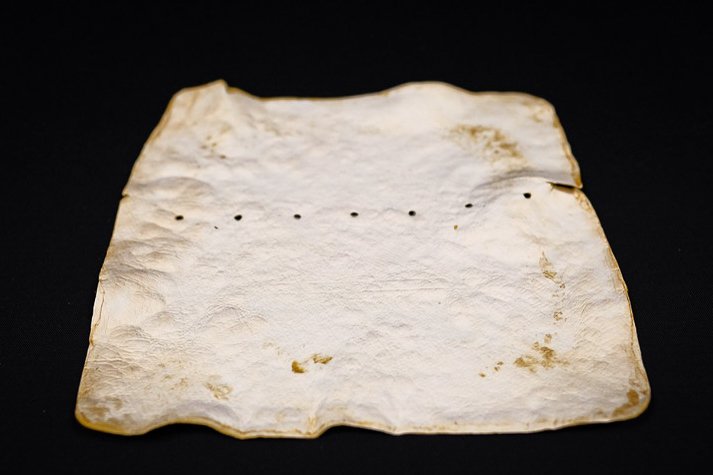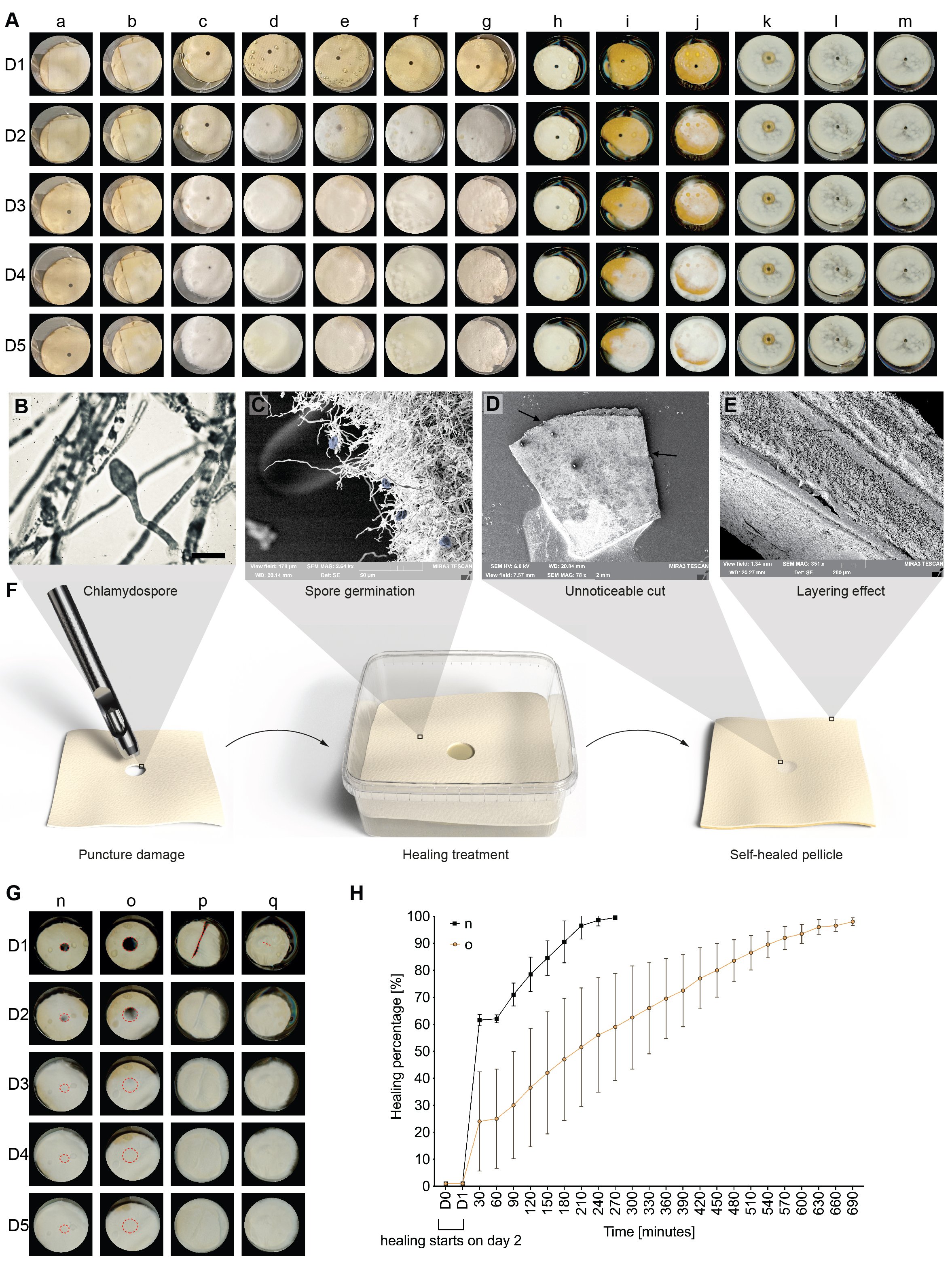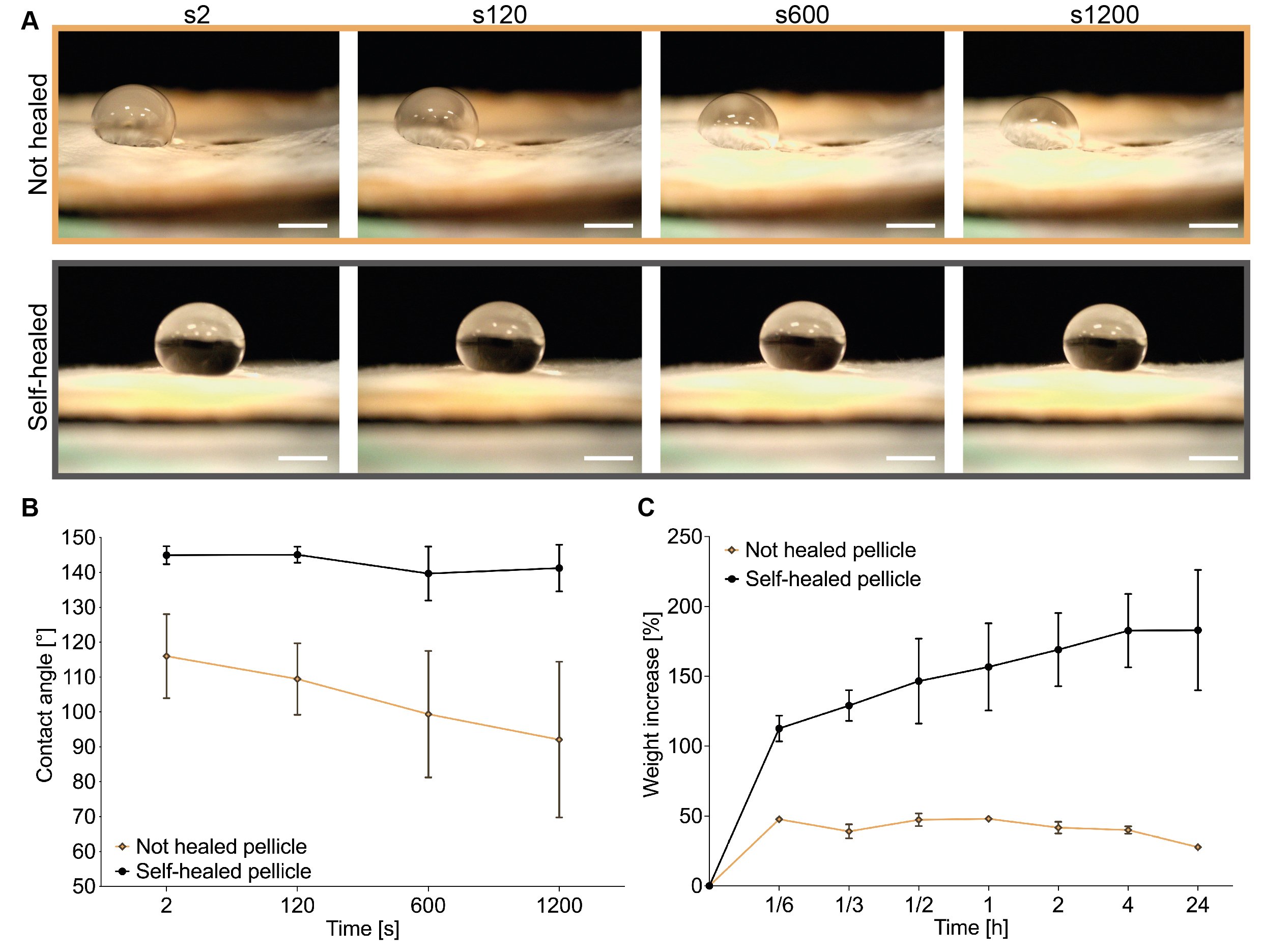
The promise to realize a paradigm shift towards bio-fabricated materials is not only thrilling for the various material characteristics themselves, the concept of employing systems that remain alive during the lifespan of the material opens new perspectives in which the materials have ‘smart’ functional properties, such as environmental sensing and adaptation or self-healing capabilities (Nguyen et al., 2018). The kingdom of the fungi represents a fascinating and evolutionary ancient biological group of eukaryotic microorganisms. More specifically, filamentous fungi (Basidiomycetes) are of particular interest: they are ubiquitous in soil habitats in which they grow as long filaments (hyphae) with 2-10 mm sized diameters forming a complex network named mycelium by degrading any type of organic plant-based material (Kameshwar & Qin, 2016). Filamentous fungi are a promising resource for the fabrication of leather-like biomaterials (Jones et al., 2020; Vandelook et al., 2021). In recent years, the interesting characteristics of filamentous fungi have not gone unnoticed in the context of bio-fabrication of biodegradable materials, thereby providing a low-cost and environmentally sustainable solution as compared to the production and life cycle of petroleum-based materials (Elsacker et al., 2020). However, in most established production processes, the mycelium material is heat-treated after growth, thereby killing the organism, thus missing out on crucial biological properties that might result in novel functionalities, such as environmental sensing or self-healing. This research pioneers the development of materials in which the fungal organism stays alive or remains active, able to for example regrow after a period of dormancy. The focus is to study the regeneration behavior of the fungus leading to the self-healing of the material upon damage. By following an interdisciplinary approach, we investigate the requirements to sustain the fungal viability during its lifespan, then unravel the correlation between biological and mechanical properties of the living material. All these new insights inform designs of novel reactive self-sustaining fabrics. This research extends the knowledge about mycelium materials, focusing on the biology of the organism and takes the first steps towards the use of fungal engineered living materials in wearables, fashion, and a wide range of applications.
Citation
Elsacker, E., Zhang, M., & Dade-Robertson, M. (2023). Fungal Engineered Living Materials: The Viability of Pure Mycelium Materials with Self-Healing Functionalities. Advanced Functional Materials, 33(29), [2301875]. https://doi.org/10.1002/adfm.202301875










